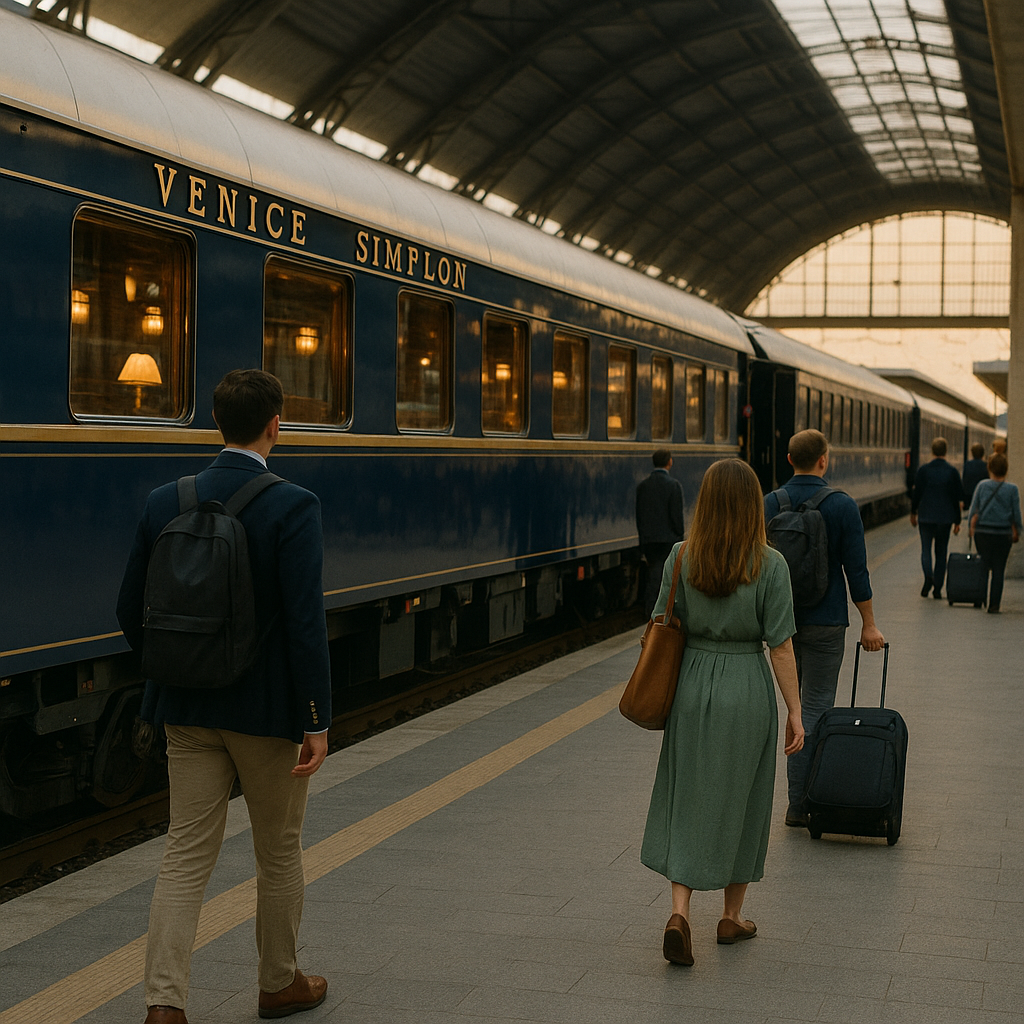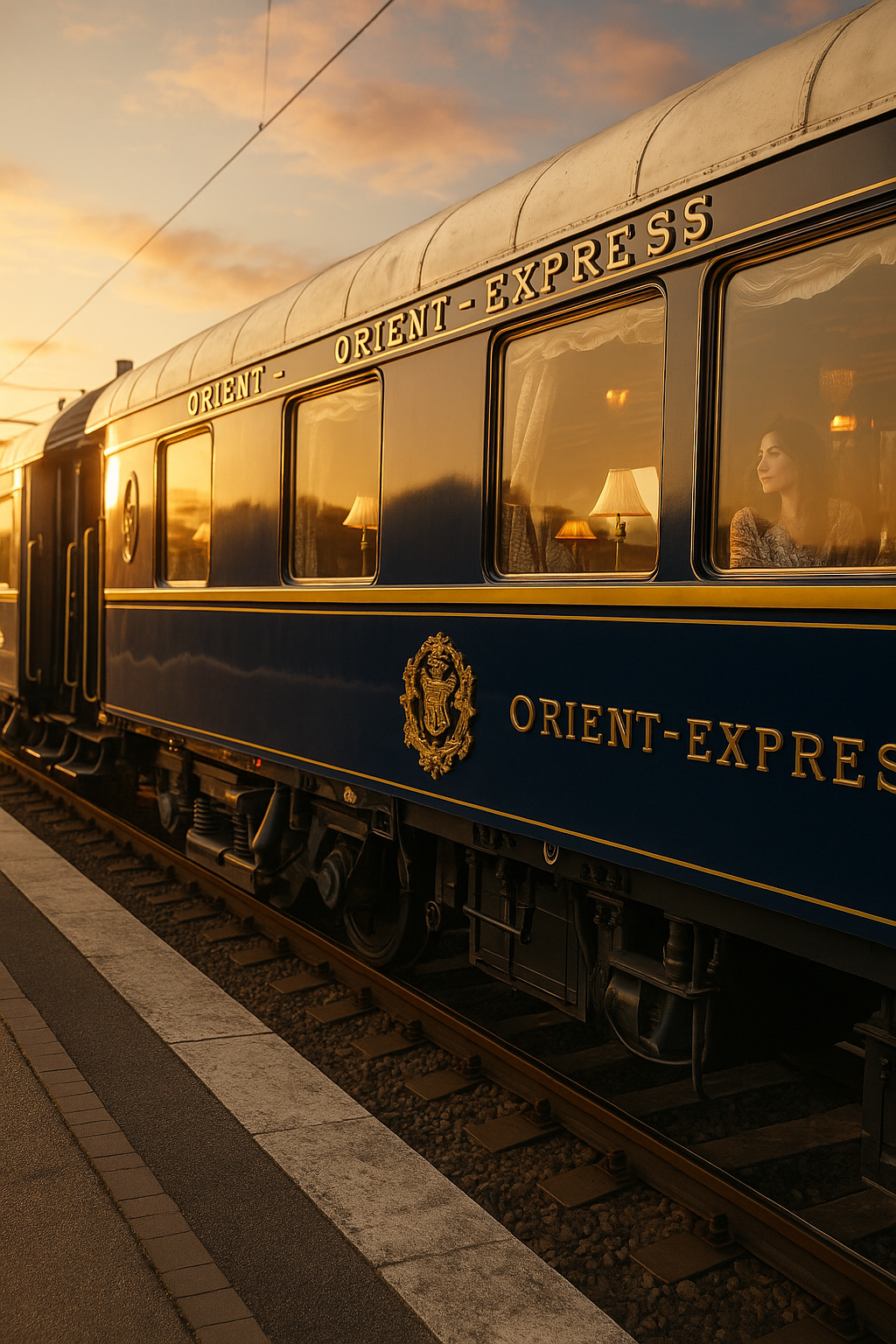“The Art of Traveling: From the Orient Express to the Trans-Siberian”

In the late 19th century, traveling by train across Europe was a privilege for the elite.
It was a luxury reserved for those with time and wealth... a symbol of refinement.
Some traveled to learn. Others to escape uneventful lives.
And some longed to reach the farthest places:
Romanov Russia, the spas of the Caucasus, lands of unknown languages.
Like those who crossed oceans, like the ill-fated Titanic,
or the great explorers: Marco Polo, Sir Richard Burton, Nellie Bly.
These were journeys lasting months. Quiet conversations in dining cars.
Women with tall hats and trunks marked with golden initials.
It was glamour in motion. Perhaps the perfect setting for mystery.
No wonder Agatha Christie chose it to plant her intrigue.
The Orient Express connected Venice or Paris with Istanbul, passing through the Alps, Vienna, Budapest, Bucharest, and the Bosphorus.
It was a hotel on rails: Art Deco lounges, live music, candlelit dinners.
The routes changed over time, but the spirit endured.
Since 1982, the Venice Simplon-Orient-Express has revived that lost luxury,
with original restored carriages and journeys that feel like dreams.
Departing from Venice or Rome, crossing Europe overnight, waking up in Budapest…
No rush. Just rhythm, beauty, and elegance.
The Trans-Siberian, on the other hand, took the opposite route and has never stopped since it began in 1891.
From Moscow to Vladivostok: 9,288 kilometers, seven time zones, over a week without interruption.
A universe unfolding outside the window: the snow of the Urals, and stations gliding by in an endless dance.
Steaming samovars in every carriage.
It was a different kind of luxury: the luxury of silence, of being disconnected, of watching without speaking.
Some rode it to reach Lake Baikal.
Others crossed Siberia like reading a book—without skipping a single page.
I don’t know when they started to fade from memory, even though they were always there.
Maybe when time became more valuable than the journey.
Or when we stopped looking out the window to look at screens.
But recently, these journeys have begun to gain new momentum,
becoming essential for curious or adventurous travelers.
And the trains still wait at the platform.
Just today, I accompanied a friend departing by train.
And as I sipped my espresso at Ostiense station, I saw it.
There it was—deep blue, golden letters. The Venice Simplon. Majestic.
And the passengers… some elegant, others modest.
But all with that look of someone who knows the Orient Express is no ordinary train.
🚂 Luxury Journey on the Trans-Siberian – Moscow to Vladivostok
🚃 Venice Simplon Orient Express – Eastern Europe by Vintage Train






